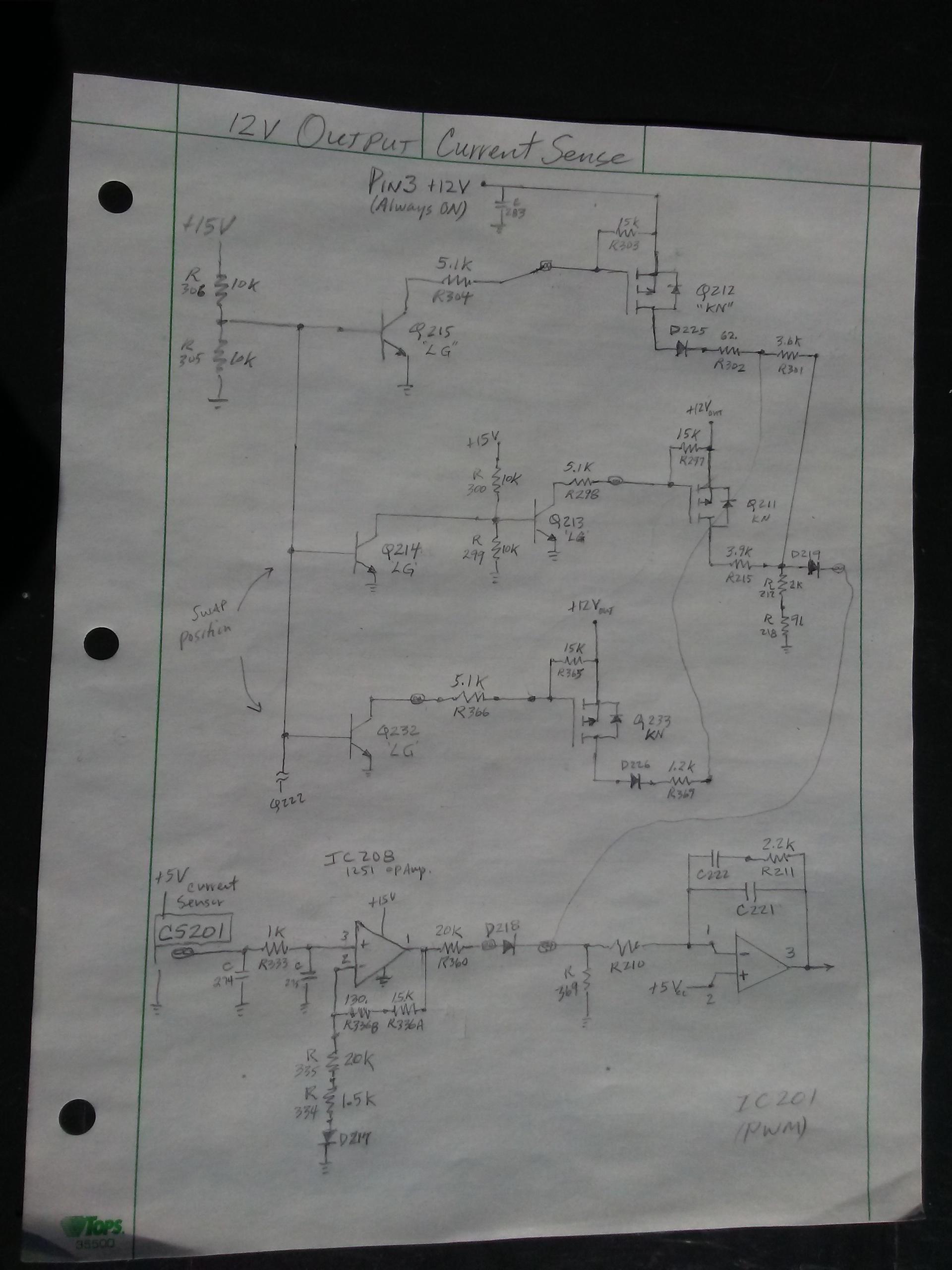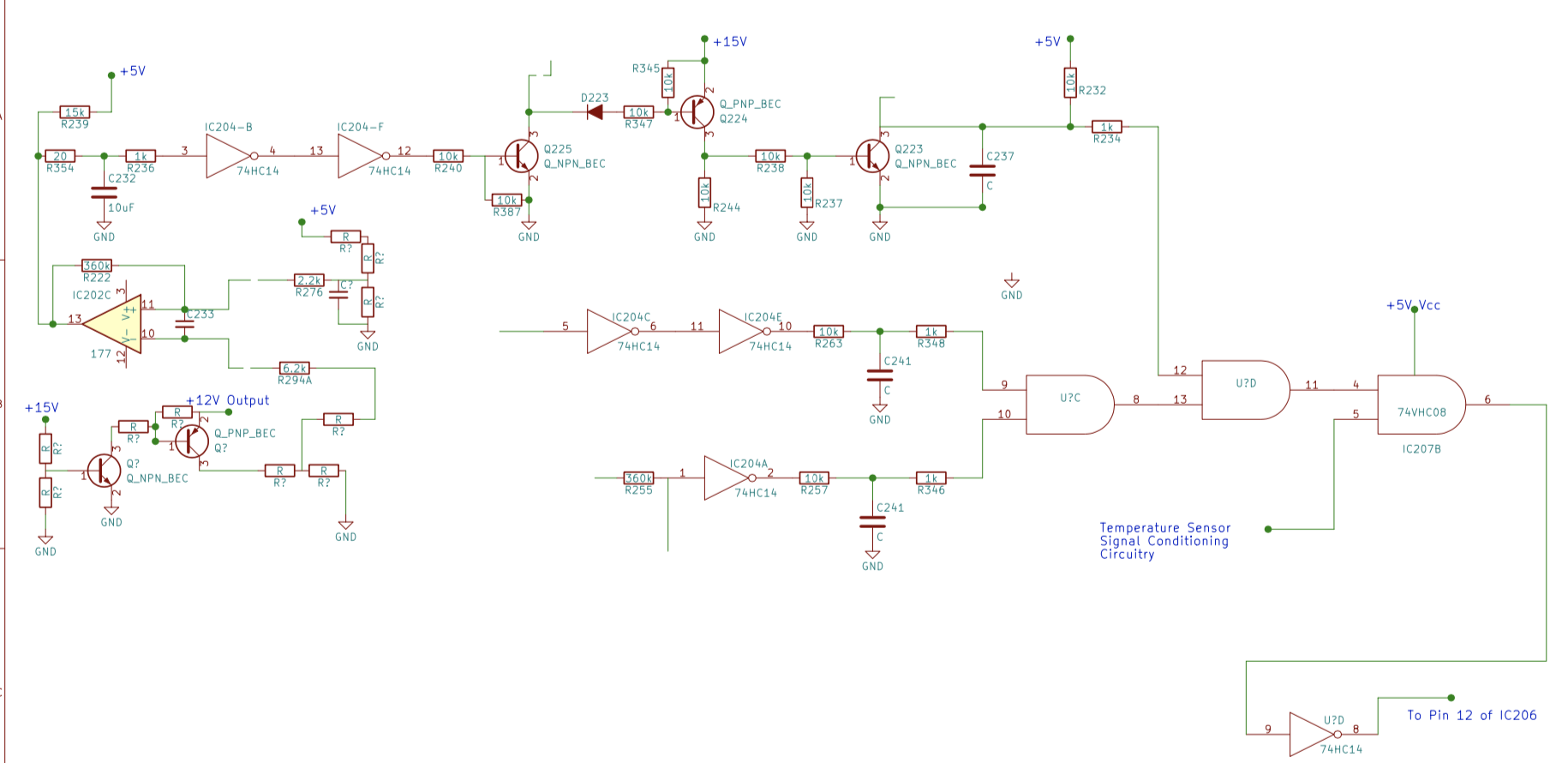It is still being driven from some path; i will look at this again in detail.
My thermistor readings, it is NTC meaning negative temperature coefficient, resistance goes down as the temperature goes up.
Immersed in glass of ice water, temp 38 F, 420kΩ
Room temperature, 68 F, 117 kΩ
touching tip of soldering iron, ~308 F, 0.5kΩ
If yours is measuring around 1kΩ or so, then that is read by the [comparator]op amp as a HOT unit, and would likely send a signal to shut down the converter. But since you said pins 9 and 10 are both Low, then the shutdown is not coming from the temperature sensor, at least from that path.
if pin 9 and 10 of IC206 are Low, then pin 8 should be low-- that is driving the Q203.
Is pin 8 of IC206 Hi (~5V)? If 9 and 10 are low, but 8 is high, then it is a defective chip.


